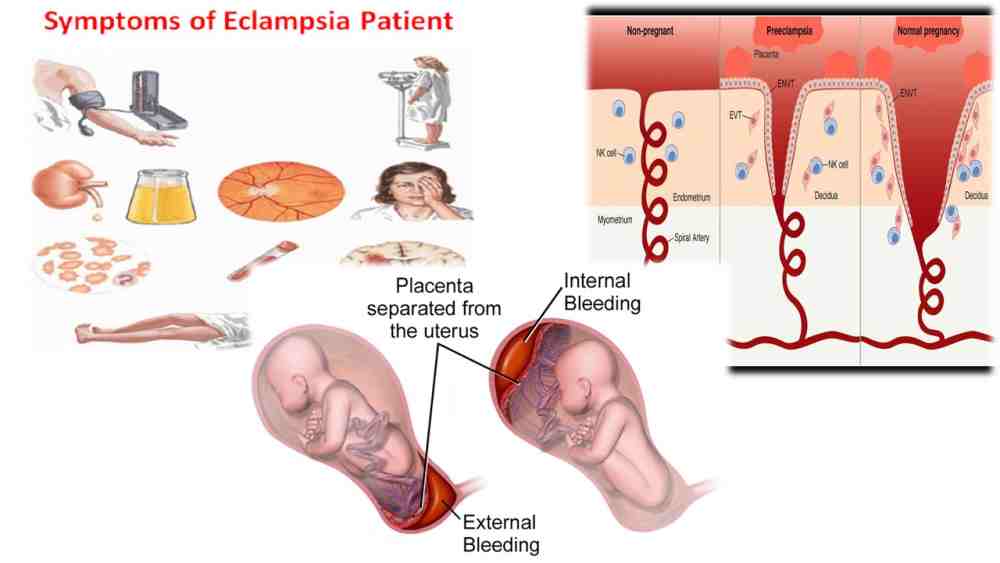I am diagnosed with Eclampsia
I am 45 years old. During my pregnancy, which is also my first, I experienced body swelling, and during labour, I suffered convulsion and was diagnosed with Eclampsia. Kindly explain the problem for young mothers and intending couples? Kuburat V. Thanks Kuburat for your question and hope you have recovered fully. Let us start by […]

I am 45 years old. During my pregnancy, which is also my first, I experienced body swelling, and during labour, I suffered convulsion and was diagnosed with Eclampsia. Kindly explain the problem for young mothers and intending couples?
Kuburat V.
Thanks Kuburat for your question and hope you have recovered fully. Let us start by explaining Pre-eclampsia. It is marked by high blood pressure accompanied with a high level of protein in the urine. Women with pre-eclampsia will often also have swelling in the feet and legs and hands. Pre-eclampsia, when present, usually appears during the second half of pregnancy, generally in the latter part of the second or in the third trimesters, although it can occur earlier.
Eclampsia is the final and most severe phase of pre-eclampsia and occurs when pre-eclampsia is left untreated. In addition to the previously mentioned symptoms, women with Eclampsia often have seizures, meaning fitting or convulsion.
The exact causes of pre-eclampsia are not known, although some researchers suspect poor nutrition, high body fat or insufficient blood flow to the uterus as possible causes. Pre-eclampsia is most often seen in first-time pregnancies and women over 40.
Other risk factors are:
- A history of chronic high blood pressure prior to pregnancy.
- Previous history of pre-eclampsia.
- A history of pre-eclampsia in mother or sisters.
- Carrying more than one baby.
- History of diabetes, kidney diseases etc.
In addition to swelling, protein in the urine, and high blood pressure, symptoms of pre-eclampsia can include:
- Rapid weight gain caused by a significant increase in body fluid.
- Abdominal pain and severe headaches.
- A change in reflexes and reduced output of urine or no urine.
- Blood in urine and dizziness.
- Excessive vomiting and nausea
What causes Eclampsia?
Eclampsia often follows pre-eclampsia, which is characterized by high blood pressure occurring in pregnancy and, rarely, postpartum. Other findings may also be present such as protein in the urine. If pre-eclampsia worsens and affects the brain, causing seizures, then one has developed Eclampsia.
Doctors don’t know for sure what causes pre-eclampsia but can explain how the symptoms of pre-eclampsia may lead to Eclampsia.
- Pre-eclampsia is when the blood pressure, or the force of blood against the walls of the arteries, becomes high enough to damage the arteries and other blood vessels. Damage to the arteries may restrict blood flow. It can produce swelling in the blood vessels in the brain and to the growing baby. If this abnormal blood flow through vessels interferes with the brain’s ability to function, seizures may occur.
- Pre-eclampsia commonly affects kidney function. Protein in the urine, also known as proteinuria, is a common sign of the condition.
- Typically, kidneys filter waste from the blood and create urine from these wastes. However, the kidneys try to retain nutrients in the blood, such as protein, for redistribution to the body. If the kidneys’ filters, called glomeruli, are damaged, protein can leak through them and excrete into the urine.
What are the treatment options?
The only real cure for pre-eclampsia and Eclampsia is the birth of the baby. Mild pre-eclampsia can be managed with careful hospital or in-home observation along with activity restriction. The treatment for severe pre-eclampsia may require more emergency treatment that is delivery of the baby, irrespective of the baby’s age.
Other treatments include:
- Use of Magnesium Sulphate to prevent Eclampsia-related fitting.
- Use of antihypertensive drugs to manage severe elevations of blood pressure.
- Monitoring fluid intake.
